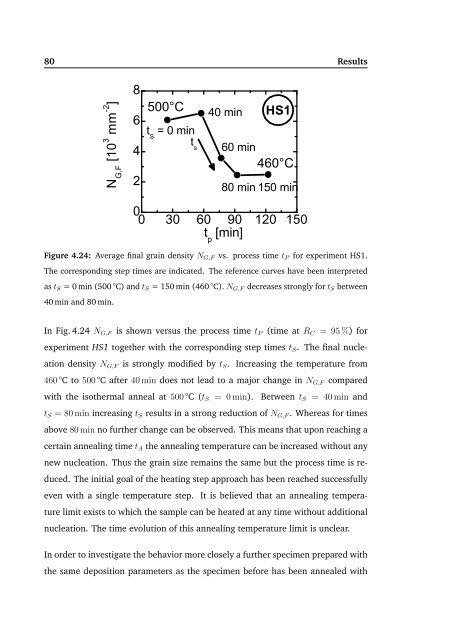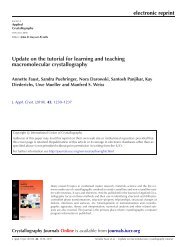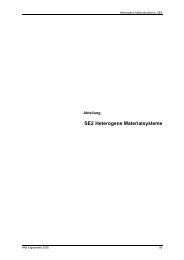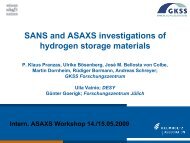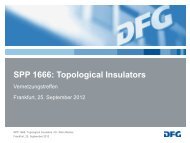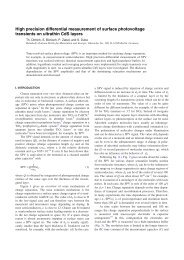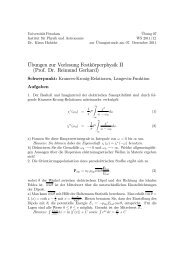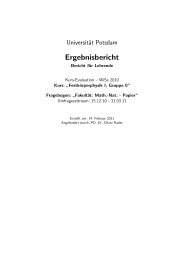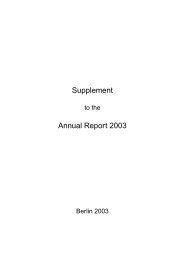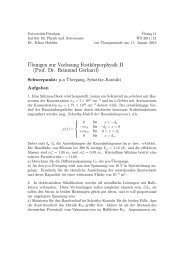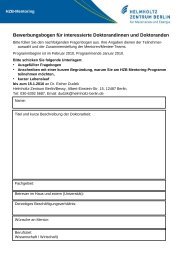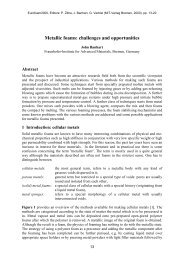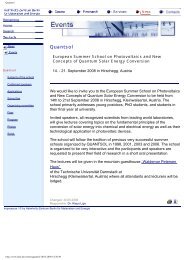(a) 100 µm - Helmholtz-Zentrum Berlin
(a) 100 µm - Helmholtz-Zentrum Berlin
(a) 100 µm - Helmholtz-Zentrum Berlin
You also want an ePaper? Increase the reach of your titles
YUMPU automatically turns print PDFs into web optimized ePapers that Google loves.
80 Results<br />
-2 ]<br />
N G ,F [1 0 3 m m<br />
8<br />
6<br />
4<br />
2<br />
�����<br />
� � ��������<br />
� �<br />
������<br />
H S 1<br />
������<br />
�����<br />
������ �������<br />
0<br />
0 3 0 6 0 9 0 1 2 0 1 5 0<br />
� ������<br />
�<br />
Figure 4.24: Average final grain density NG,F vs. process time tP for experiment HS1.<br />
The corresponding step times are indicated. The reference curves have been interpreted<br />
as tS = 0 min (500 °C) and tS = 150 min (460 °C). NG,F decreases strongly for tS between<br />
40 min and 80 min.<br />
In Fig. 4.24 NG,F is shown versus the process time tP (time at RC = 95 %) for<br />
experiment HS1 together with the corresponding step times tS. The final nucle-<br />
ation density NG,F is strongly modified by tS. Increasing the temperature from<br />
460 °C to 500 °C after 40 min does not lead to a major change in NG,F compared<br />
with the isothermal anneal at 500 °C (tS = 0 min). Between tS = 40 min and<br />
tS = 80 min increasing tS results in a strong reduction of NG,F . Whereas for times<br />
above 80 min no further change can be observed. This means that upon reaching a<br />
certain annealing time tA the annealing temperature can be increased without any<br />
new nucleation. Thus the grain size remains the same but the process time is re-<br />
duced. The initial goal of the heating step approach has been reached successfully<br />
even with a single temperature step. It is believed that an annealing tempera-<br />
ture limit exists to which the sample can be heated at any time without additional<br />
nucleation. The time evolution of this annealing temperature limit is unclear.<br />
In order to investigate the behavior more closely a further specimen prepared with<br />
the same deposition parameters as the specimen before has been annealed with


